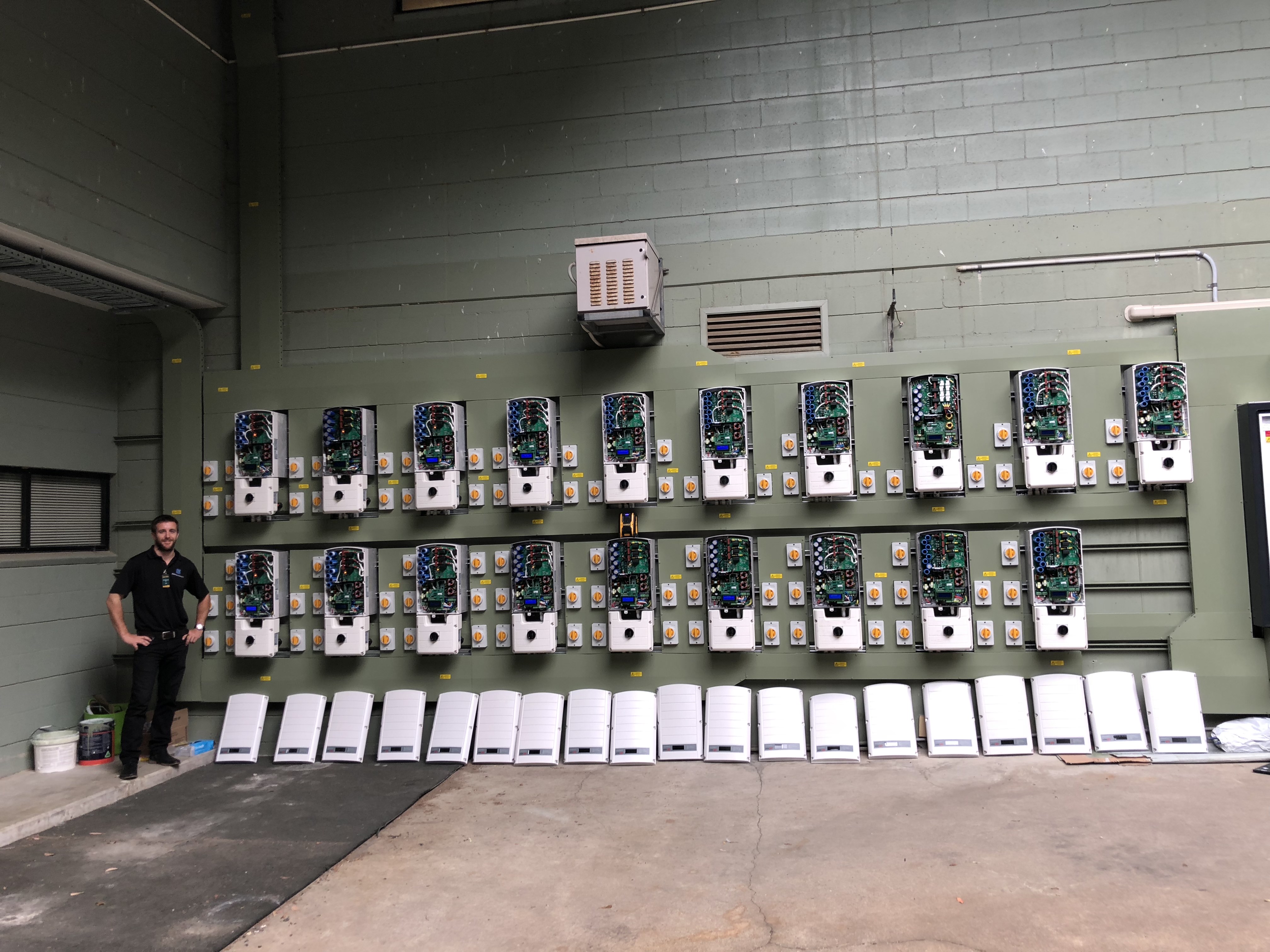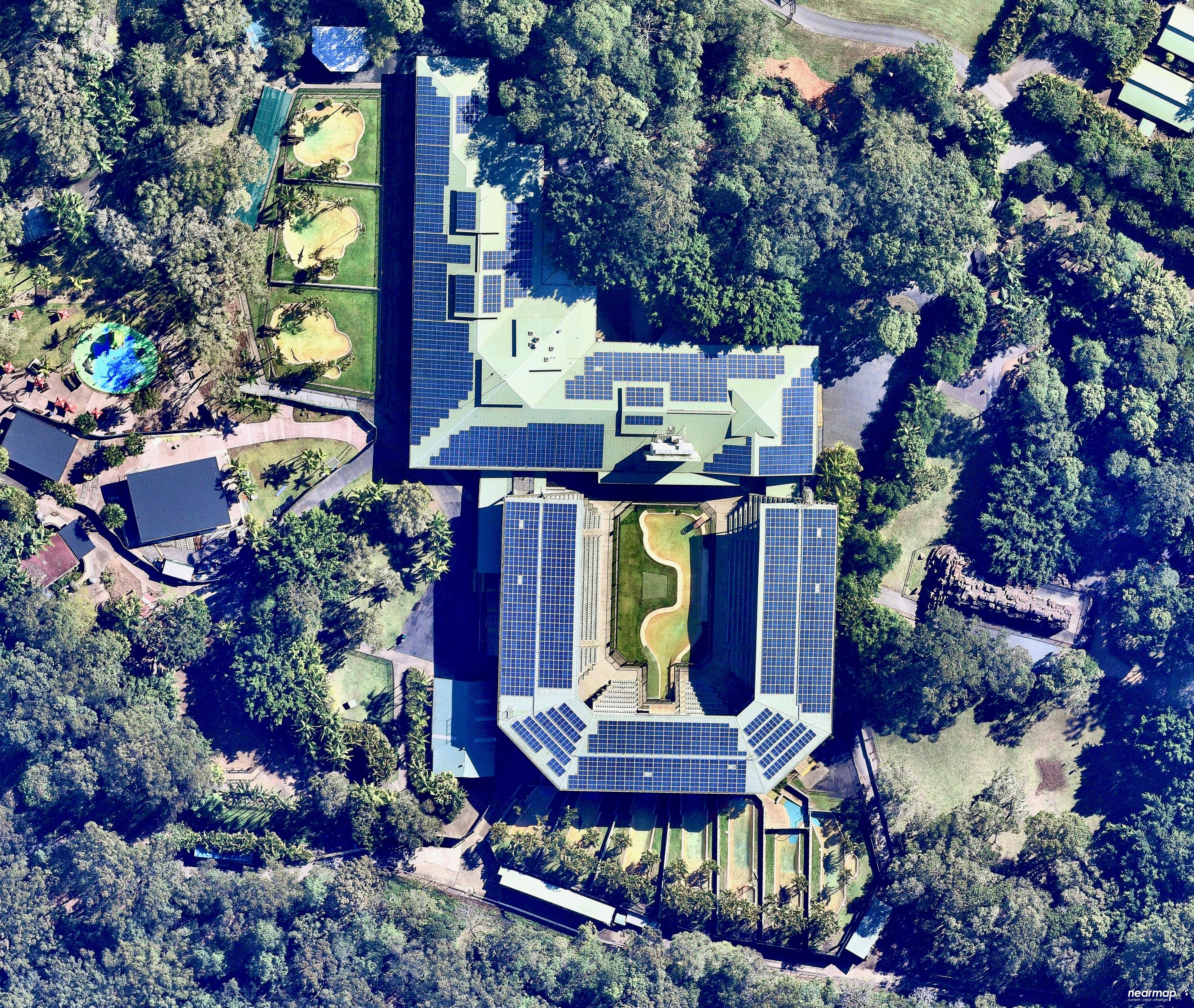Australia Zoo's solar journey
Australia Zoo is a step ahead of the rest when it comes to environmentally friendly practices. One of the ways it is reducing its carbon footprint is through the use of solar and battery systems, which was installed by GEM Energy, now trading as RACQ Solar.
We sat down with Chief Marketing Officer Darren Gertler to talk about what benefits the zoo had experienced since going green.

How many buildings have a solar system?
As a zoological facility with the largest solar arrays in the southern hemisphere, Australia Zoo is committed to reducing our carbon footprint on the planet, building a better and more sustainable world for our fauna and flora, and for future generations.
At Australia Zoo, the world-famous Crocoseum, which seats 5,000 people and facilitates the Wildlife Warriors show daily, and the Crikey Café, both have solar power (638kW system). The 1,800 solar panels were installed on the Crocoseum roof in 2018.
The 24-hour Australia Zoo Wildlife Hospital, which is a specialised facility to treat sick, injured and orphaned native wildlife, had a 99kW solar power system installed in 2020.
It has 115 solar panels, heat pumps for hot water, and three Tesla battery systems. The rooftop solar panels power electricity and the pumps for the hot water. And the battery system stores power to be used overnight.
On average, Australia Zoo’s Crocoseum generates between 700 MWh and 900 MWh of electricity per year – the equivalent to around 49 homes’ energy use for a whole year.
The solar panel and invertor system creates enough electricity to power more than a third of Australia Zoo’s total energy requirements.
The Wildlife Hospital solar system generates around 125 MWh of electricity, producing more than 50% of the facility’s required energy.
What reduction in emissions has the zoo experienced?
Between the Zoo and our Wildlife Hospital we save 1,625 tonnes of CO2 emissions per year, which is equivalent to 37,600 trees being planted in a year. This also equates to a saving of approximately $165,000 per year.

Are there any other benefits?
Installing solar and battery power systems at the Zoo aligns with our commitment to making clever and sustainable choices to protect the environment.
As Australia’s most solar-powered zoological facility, we are proud to be leading this initiative – not only does it reduce our carbon footprint it benefits the 750,000 guests who visit the Zoo each year by reducing heat under the roof of the Crocoseum and Crikey Café, by an average of two degrees.
What kind of equipment is being powered in the Wildlife Hospital?
The Australia Zoo Wildlife Hospital operates 24/7, treating thousands of wild animals that are admitted each year. The areas within the Wildlife Hospital which use energy are the x-ray machine, lighting, washing and drying machines, autoclave, air-conditioning, heaters and heat pumps for hot water.
The Wildlife Hospital's recently opened Perry MacFarlane Intensive Care Ward has a temperature controlled hyperbaric chamber for treating patients suffering from burns, which also utilises energy.
The Intensive Care Ward was named by actor and producer Seth MacFarlane in honour of his mother and was built after witnessing the 2019-2020 bushfire season that affected the wildlife population on an unprecedented scale.
There was an outpour of support from passionate Wildlife Warriors, including RACQ who helped fundraise for the facility, helping us provide a lifeline to our native fauna and giving them a second chance in the wild.

Related topics
-
The information in this article has been prepared for general information purposes only and is not intended as legal advice or specific advice to any particular person. Any advice contained in the document is general advice, not intended as legal advice or professional advice and does not take into account any person’s particular circumstances. Before acting on anything based on this advice you should consider its appropriateness to you, having regard to your objectives and needs.
Insurance products (excluding Travel Insurance) are issued by RACQ Insurance Limited ABN 50 009 704 152 (RACQ). Conditions, limits and exclusions apply. This is general advice only and may not be right for you. This information does not take your personal objectives, circumstances or needs into account. Read the Product Disclosure Statement (PDS) and any applicable Supplementary PDS before making a purchase decision on this product. You can also access our Target Market Determinations on this website.
Banking and loan products issued by Members Banking Group Limited ABN 83 087 651 054 AFSL/Australian credit licence 241195 trading as RACQ Bank. Terms, conditions, fees, charges and lending policies apply. This is general advice only and may not be right for you. This information does not take your personal objectives, circumstances or needs into account. Read the disclosure documents for your selected product or service, including the Financial Services Guide and the Terms and Conditions, and consider if appropriate for you before deciding.
Except for RACQ Bank, any RACQ entity referred to on this page is not an authorised deposit-taking institution for the purposes of the Banking Act 1959 (Cth). That entity’s obligations do not represent deposits or other liabilities of RACQ Bank. RACQ Bank does not guarantee or otherwise provide assurance in respect of the obligations of that entity, unless noted otherwise.
RACQ Operations Pty Ltd (ABN 80 009 663 414 AR 000234978) and Members Travel Group Pty Ltd (ABN 45 144 538 803 AR 000432492) are acting as an Authorised Representative of the issuer of the insurance, Tokio Marine & Nichido Fire Insurance Co., Ltd. (ABN 80 000 438 291 AFSL 246 548). Any advice set out above is general in nature only, and does not take into account your objectives, financial situation or needs. Before purchasing any travel products, please consider the RACQ Travel Insurance Product Disclosure Statement (PDS) and the Target Market Determinations (TMDs) that apply to these products. Whilst the PDS outlines the Terms and Conditions of these products, the TMDs outline the intended class of customers that comprise the target market for these travel products. This will allow you to consider which products best suit your objectives, financial situation and needs and consider the products appropriateness to your personal circumstances. TMDs also outline matters involving the distribution and the review of these products. The PDS, Supplementary PDS and TMDs for each travel product can be found here.


